Why Investing with Less Money Makes Sense
Before we dive into the options, let’s tackle the “why.” Investing isn’t just about having a pile of cash—it’s about making what you do have grow. Starting small lets you dip your toes in, learn the ropes, and build confidence without risking it all. Plus, with the magic of compound interest, even tiny investments can snowball into something substantial over time.
Take it from Warren Buffett, one of the world’s most famous investors:
“Someone’s sitting in the shade today because someone planted a tree a long time ago.”
Starting early, even with a small amount, is like planting that tree. The sooner you begin, the more time your money has to grow.
Now, let’s debunk a big misconception: “You need thousands to invest.” Nope! Technology has leveled the playing field, giving everyday folks access to tools once reserved for Wall Street pros. Whether it’s a few bucks or a modest $50, there’s a way to make it work. Here’s how.
Table of Contents
5 Easy Options to Start Investing with Less Money
We’ve handpicked five beginner-friendly options that require minimal cash to get started. Each one offers a unique way to grow your money, and we’ll cover everything you need to know—pros, cons, and all.
Option 1: Micro-Investing Apps – Turn Spare Change into Wealth
What Are They?
Micro-investing apps are like your personal financial sidekick. They let you invest tiny amounts—sometimes just pennies—by rounding up your everyday purchases and putting the difference into a portfolio. Spend $3.75 on a latte? The app rounds it to $4 and invests the $0.25. It’s investing on autopilot.

How Do They Work?
Most apps link to your bank account or debit card. They analyze your spending, collect the spare change, and invest it in diversified portfolios, often made up of Exchange-Traded Funds (ETFs). These portfolios spread your money across stocks and bonds, reducing risk while giving you exposure to the market.
Why It’s Great for Beginners
- Low Barrier to Entry: Start with as little as $1.
- Hands-Off: No need to pick stocks or study charts—the app does it for you.
- Habit-Building: It turns spending into saving without you noticing.
Pros and Cons
- Pros:
- Super easy to use
- Automatic investing
- Diversified options
- Cons:
- Fees can add up (e.g., $1-$3/month)
- Limited control over where your money goes
Popular Platforms
- Acorns: Famous for its “round-up” feature and simple interface. Starts at $3/month.
- Stash: Lets you invest in fractional shares with educational content. Begins at $1/month.
- Robinhood: Offers commission-free trading for stocks and ETFs. No minimum to start.
How to Get Started
- Download an app (Acorns, Stash, or Robinhood).
- Link your bank account.
- Set your preferences (e.g., aggressive or conservative portfolio).
- Watch your spare change grow!
“Micro-investing is empowering people to invest who never thought they could.” – Noah Kerner, CEO of Acorns
Option 2: Fractional Shares – Own a Piece of the Pie
What Are They?
Fractional shares let you buy a slice of a stock instead of the whole thing. Can’t afford Amazon’s $3,000+ share price? No problem—you can own a fraction for $5 or $10. It’s like splitting a pizza with friends: everyone gets a piece.
How Do They Work?
Many online brokers and apps now offer fractional shares. You decide how much you want to invest, and they divvy up the stock accordingly. Your investment tracks the stock’s performance, just on a smaller scale.
Why It’s Great for Beginners
- Affordable Access: Buy into big-name companies with small amounts.
- Flexibility: Invest exactly what you can afford.
- Learning Opportunity: Experiment with real stocks without breaking the bank.
Pros and Cons
- Pros:
- Access to expensive stocks
- No minimums on some platforms
- Builds a diversified portfolio
- Cons:
- Market risk still applies
- Some platforms charge fees
Popular Platforms
- Robinhood: Free fractional shares with no commissions.
- Fidelity: Offers fractional shares with a $1 minimum.
- Charles Schwab: “Stock Slices” let you buy fractions of S&P 500 companies.
How to Get Started
- Open an account with a broker offering fractional shares.
- Deposit your starting amount (even $5 works).
- Pick stocks or ETFs you like.
- Buy your fraction and start tracking!
Option 3: Robo-Advisors – Let Technology Manage Your Money
What Are They?
Robo-advisors are automated platforms that manage your investments using algorithms. You answer a few questions about your goals and risk tolerance, and they build and manage a portfolio for you—all for a fraction of what a human advisor charges.
How Do They Work?
After you deposit money, the robo-advisor invests it in a mix of ETFs tailored to your profile. It rebalances your portfolio over time to keep it aligned with your goals, all without you lifting a finger.
Why It’s Great for Beginners
- Low Minimums: Some start at $0 or $10.
- Set It and Forget It: Perfect if you don’t want to micromanage.
- Cost-Effective: Fees are typically 0.25%-0.50% per year.
Pros and Cons
- Pros:
- Professional management
- Low fees compared to human advisors
- Diversified portfolios
- Cons:
- Less personalization
- Annual fees apply
Popular Platforms
- Betterment: No minimum, 0.25% fee, great for beginners.
- Wealthfront: $500 minimum, 0.25% fee, tax-loss harvesting included.
- M1 Finance: $100 minimum, free to use, with customizable portfolios.
Comparison Table: Robo-Advisors
| Platform | Minimum Investment | Annual Fee | Key Feature |
|---|---|---|---|
| Betterment | $0 | 0.25% | Goal-based investing |
| Wealthfront | $500 | 0.25% | Tax optimization |
| M1 Finance | $100 | 0% | Custom “pies” |
How to Get Started
- Sign up with a robo-advisor.
- Complete the risk assessment quiz.
- Deposit your starting amount.
- Let the algorithm do the heavy lifting.

Option 4: Peer-to-Peer Lending – Be the Bank
What Is It?
Peer-to-peer (P2P) lending lets you loan money to individuals or small businesses online and earn interest as they repay. It’s like being a mini-bank, but with smaller amounts and higher potential returns.
How Does It Work?
Platforms connect lenders (you) with borrowers. You choose who to lend to based on their credit profile and invest as little as $25 per loan. As borrowers repay with interest, your money grows.
Why It’s Great for Beginners
- High Returns: Interest rates can range from 5% to 10% or more.
- Small Stakes: Diversify by spreading $25 across multiple loans.
- Control: Pick loans that match your risk comfort level.
Pros and Cons
- Pros:
- Higher potential returns
- Low entry point
- Passive income stream
- Cons:
- Risk of borrower default
- Less liquidity (money is tied up)
Popular Platforms
- LendingClub: Starts at $25 per loan, wide range of borrowers.
- Prosper: Similar model, with solid returns for small investors.
How to Get Started
- Join a P2P platform.
- Browse loan listings and pick ones you like.
- Invest small amounts across multiple loans.
- Reinvest repayments to compound your gains.
“P2P lending is democratizing finance by cutting out the middleman.” – Ron Suber, Fintech Expert
Option 5: Index Funds & ETFs – Diversify on a Dime
What Are They?
Index funds and ETFs (Exchange-Traded Funds) are baskets of stocks or bonds that track a market index, like the S&P 500. They’re affordable, diversified, and perfect for long-term growth.
How Do They Work?
You buy shares of the fund through a broker. Your money is spread across hundreds or thousands of companies, reducing risk. Many brokers now offer low or no minimums to buy in.
Why It’s Great for Beginners
- Diversification: One share covers many companies.
- Low Cost: Expense ratios are often below 0.1%.
- Proven Returns: Historically, the S&P 500 averages 7-10% annually.
Pros and Cons
- Pros:
- Low fees
- Reduced risk through diversification
- Easy to buy
- Cons:
- Market-dependent returns
- No “get rich quick” potential
Popular Options
- Vanguard S&P 500 ETF (VOO): Tracks the top 500 U.S. companies.
- Schwab U.S. Broad Market ETF (SCHB): Covers the entire U.S. market.
How to Get Started
- Open a brokerage account (e.g., Vanguard, Fidelity).
- Deposit your starting amount (some have $0 minimums).
- Search for an index fund or ETF.
- Buy shares and hold for the long haul.
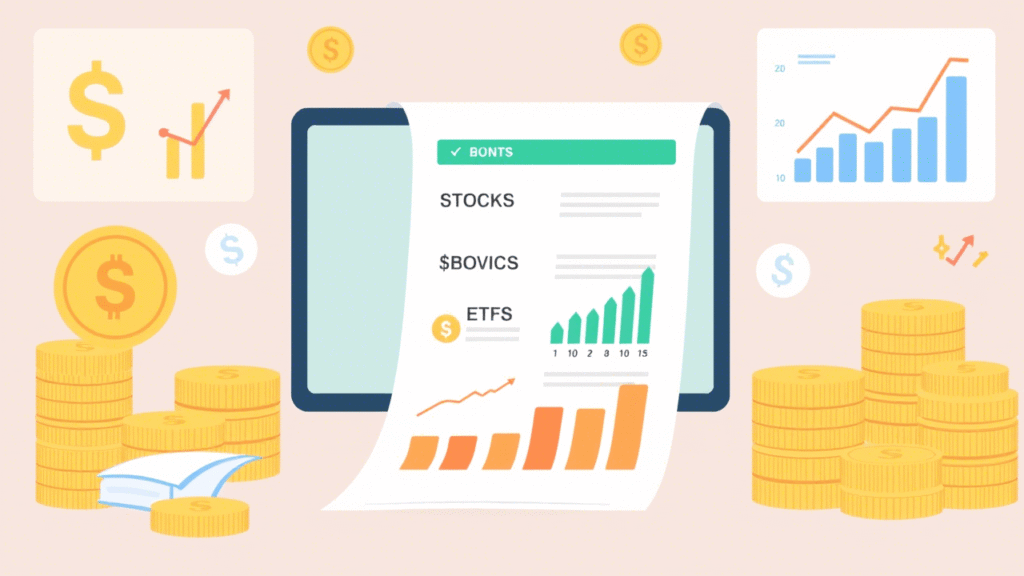
Which Option Is Right for You?
Choosing the best option depends on your goals, risk tolerance, and how hands-on you want to be. Here’s a quick guide:
- Want simplicity? Try micro-investing apps or robo-advisors.
- Love picking stocks? Go for fractional shares.
- Seeking higher returns? Explore P2P lending.
- Long-term thinker? Index funds and ETFs are your friends.
Still unsure? Start with one, experiment, and adjust as you learn. The key is to start.
Tips to Maximize Your Small Investments
- Be Consistent: Invest regularly, even if it’s just $5 a week.
- Reinvest Earnings: Let dividends and interest compound.
- Keep Fees Low: Compare platforms to avoid profit-eating charges.
- Educate Yourself: Read books, follow blogs, or take free courses.
- Stay Patient: Wealth-building takes time—don’t chase quick wins.
Conclusion: Your Journey Starts Now
Investing with less money isn’t a pipe dream—it’s a practical, powerful way to secure your financial future. Whether you’re rounding up spare change with micro-investing apps, buying fractional shares of your favorite companies, letting robo-advisors handle the work, lending through P2P platforms, or diversifying with index funds, there’s an option that fits your budget and goals.
The biggest mistake you can make? Waiting. As the saying goes, “The best time to plant a tree was 20 years ago. The second-best time is now.” Take that first step today, even if it’s small. Your future self will thank you.
FAQs: Your Burning Questions Answered
1. How much money do I need to start investing?
You can begin with as little as $1 using micro-investing apps or fractional shares. Some robo-advisors and brokers have no minimums at all!
2. Is it safe to invest with small amounts?
All investing carries some risk, but starting small lets you test the waters without overcommitting. Diversified options like ETFs and robo-advisors can lower your risk.
3. What are the risks of micro-investing?
Market ups and downs affect your returns, and fees can take a bite if your balance is tiny. Always check the fee structure before signing up.
4. How do I choose the right investment option for me?
Think about your goals (short-term or long-term), how much risk you’re okay with, and whether you want active or passive management. Experimenting with one option can help you decide.
5. Can I really make money with small investments?
Absolutely! Small amounts grow through consistency and compound interest. For example, $5 a week at 7% annual return could become $1,300 in 20 years.





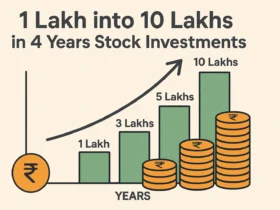


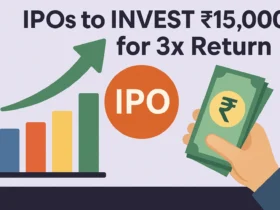











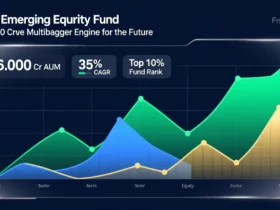
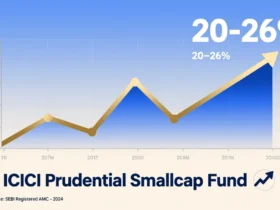









Leave a Reply